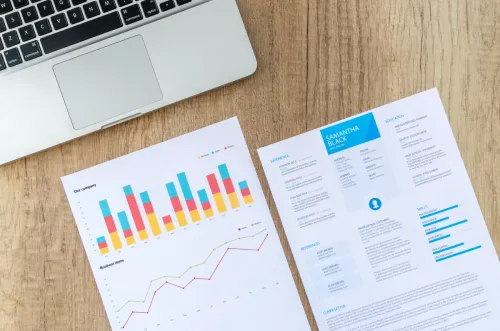Search engine optimization (SEO) is probably the process that generates the greatest reward for bloggers and website owners. Building visibility and traffic can't be a bad thing, right? While there are various aspects of SEO, one of the most fundamental and impactful elements is on-page SEO optimization. In this comprehensive guide, we will delve into the world of on-page SEO and provide you with actionable tips to enhance your blog's search engine rankings and overall performance.
Understanding On-Page SEO
On-page SEO refers to the optimization techniques that you apply directly to your website's individual pages in order to improve their visibility in search engine results pages (SERPs). Unlike off-page SEO, which involves external factors like backlinks and social signals, on-page SEO is entirely under your control, making it a powerful tool for improving your website's ranking and user experience.
Keyword Research: Laying the Foundation
Effective on-page SEO begins with thorough keyword research. Keywords are the terms and phrases that users enter into search engines to find relevant content. By understanding what keywords your target audience is using, you can tailor your content to match their search intent. Tools like Google Keyword Planner, SEMrush, and Ahrefs can assist you in identifying high-volume and relevant keywords for your niche.
When conducting keyword research, aim for a mix of short-tail and long-tail keywords. Short-tail keywords are broad terms with high search volumes, while long-tail keywords are more specific and typically have lower competition. Integrating a combination of both types can help you capture a wider range of search queries.
Optimising On-Page Elements
Several on-page elements contribute to your blog's overall SEO performance. These elements include:
- Title Tags
The title tag is an HTML element that defines the title of a webpage. It is displayed as the main headline in search engine results and browser tabs. Incorporate your target keyword naturally within the title tag to enhance relevancy and click-through rates.
- Meta Descriptions
The meta description is a concise summary that appears below the title tag in search results. While it doesn't directly impact rankings, a well-crafted meta description can entice users to click on your link. Aim to create compelling meta descriptions that accurately represent the content and encourage engagement.
- Headers (H1, H2, H3, etc.)
Headers play a crucial role in organizing your content and improving user experience. Search engines also use header tags to understand the hierarchy of your content. Use your target keywords in your headers and break up your content into sections for easier reading.
- URL Structure
A clean and descriptive URL structure enhances both user experience and SEO. Include your target keywords in your URLs to provide users and search engines with a clear idea of the page's content. Avoid using long strings of numbers or irrelevant characters in your URLs.
Crafting High-Quality Content
Content is at the heart of any successful blog. When creating content for on-page SEO, keep these tips in mind:
- Keyword Placement
Strategically place your target keyword within the content, including the first paragraph. However, prioritize natural language and readability over keyword stuffing, which can negatively impact user experience and rankings.
- Comprehensive and Valuable
Craft comprehensive, valuable, and in-depth content that addresses the needs and questions of your target audience. Search engines tend to favor content that provides comprehensive answers to users' queries.
- Engaging Multimedia
Incorporate relevant images, videos, infographics, and other multimedia elements to enhance the visual appeal and engagement of your content. Optimize these elements by using descriptive file names and alt tags.
- Internal and External Links
Include both internal links (links to other pages on your website) and external links (links to authoritative and relevant external sources). Internal links help users navigate your site, while external links showcase your credibility and resourcefulness.
Mobile-Friendly Design
With the majority of internet users accessing content through mobile devices, having a mobile-friendly website is imperative. Google also considers mobile-friendliness as a ranking factor. Ensure that your website's design and layout are responsive and optimized for various screen sizes.
Page Loading Speed
Page loading speed significantly impacts user experience and SEO. Slow-loading pages can lead to high bounce rates and lower search rankings. Use tools like Google PageSpeed Insights to identify opportunities for improving your website's loading times, such as compressing images and minimizing code.
Structured Data Markup
Structured data, also known as schema markup, provides additional context to search engines about your content. It helps search engines understand the type of content you have and can lead to rich snippets in search results, enhancing your visibility and click-through rates.
Optimized Images
Images not only enhance the visual appeal of your content but also contribute to SEO. Use descriptive file names and alt text for your images, incorporating relevant keywords where appropriate. Properly optimized images improve accessibility and can appear in image search results.
User Experience and Engagement
Google's algorithms increasingly consider user experience metrics when determining search rankings. A positive user experience leads to longer on-site engagement, reduced bounce rates, and higher rankings. To enhance user experience:
- Readable Typography
Choose a legible font and font size for your content. Break up long paragraphs with headers and bullet points to make your content more scannable.
- Intuitive Navigation
Design a clear and intuitive navigation menu that helps users find relevant content easily. Include internal links to guide users to related articles or resources.
- Reduced Intrusive Ads
While ads are a common way to monetize your blog, excessive and intrusive ads can negatively impact user experience. Ensure that ads do not obstruct the main content or annoy visitors.
- Engagement Signals
Encourage user engagement by enabling comments, social sharing buttons, and related post suggestions. User-generated content and social shares indicate to search engines that your content is valuable and relevant.
Regularly Updated Content
Search engines prefer fresh and updated content. Regularly updating your blog with new articles and revisiting old content to make necessary updates can signal to search engines that your website is active and relevant.
Monitor and Analyse Performance
Implementing on-page SEO techniques is an ongoing process. Monitor your website's performance using tools like Google Analytics and Google Search Console. Analyze metrics such as organic traffic, bounce rates, click-through rates, and keyword rankings to identify areas for improvement.
On-page SEO optimisation is a multifaceted discipline that requires attention to detail and a commitment to delivering valuable content to your audience. By understanding the principles of on-page SEO and implementing best practices, you can improve your blog's search engine rankings, increase organic traffic, and create a positive user experience. Keep in mind that SEO is a long-term endeavor, and consistent effort and adaptation are key to achieving sustainable success in the ever-evolving digital landscape. Trust us, it takes a real commitment, and the patience of a saint!






